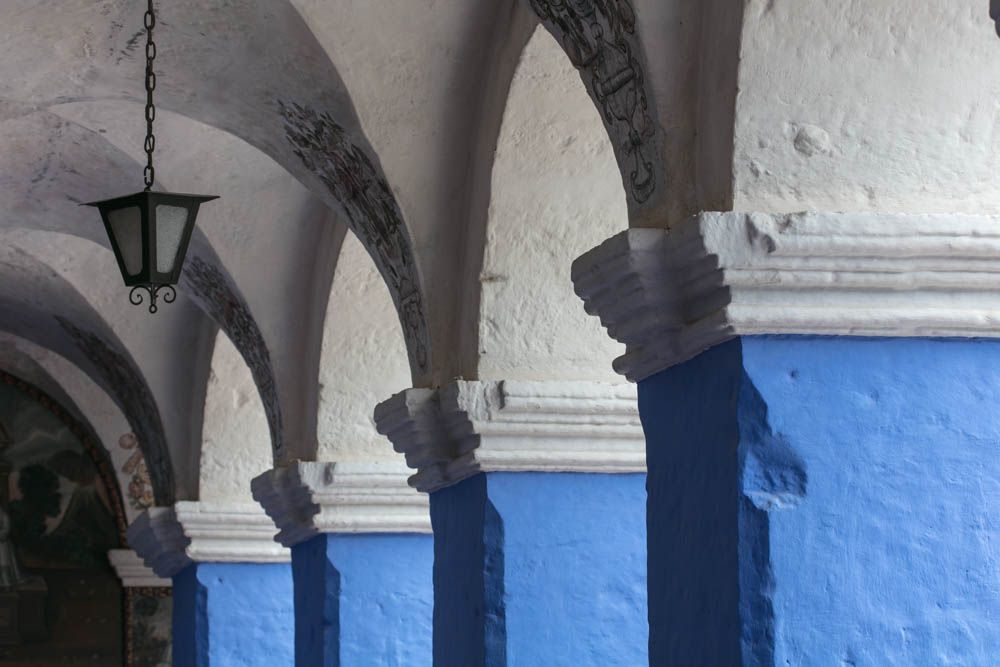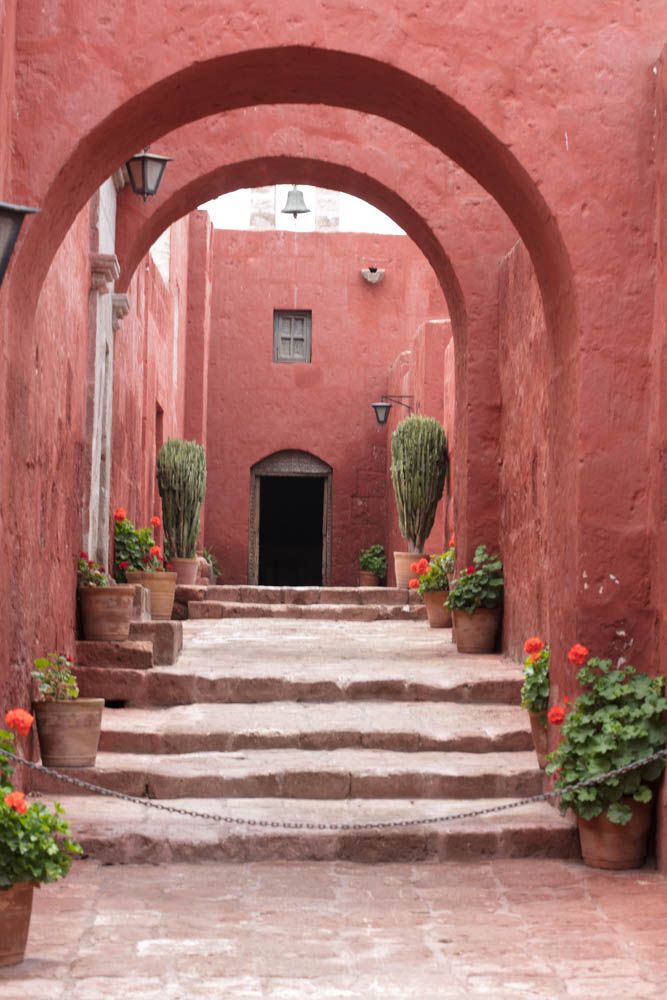
Passage adjacent to the Claustro los Naranjos (Orange Tree Cloister), a magical space within the convent where the nuns re-enact the Passion of Christ on Good Friday every year.
Founded in 1580 by Doña María de Guzmán, a wealthy widow who became a nun, Arequipa’s Monastery of Santa Catalina takes up an entire city block. The quiet spaces and rich colors of the convent struck a chord with honors art history major Elanor Jones. Elanor is one of 16 honors students participating in the new Honors Passport:Peru intercession course.
The sheer scale of the convent is almost definitely the most impressive part of the convent we saw today. With the sunny weather gracing us, the expansive system of bright walls and floral accents was sensory overload in the best way, each turned corner revealing a new visual delight or architecture and color. I loved the well-preserved displays that showed the way the convent once functioned, sandwiched within the currently operating convent that had to have been scaled down, allowing this set up.
Walking through the courtyards it was easy to imagine a life of sitting in the sun quietly reading. This convent within a convent highlights the massive layout that held these nuns, truly making the visitor aware how it was understood as a city within a city. Considering the relatively small size of Arequipa, the city surrounding the convent, it is surprising that it was able to support such an extensive operation. Of course, the convent was not incredibly dependent on the public. Rather, the nuns supported the general population with charity services, depending on families to sponsor their daughters. It is impressive to me that sending a daughter to live this life was the more affordable option in comparison to a marriage dowry, as it was explained to us how much it cost to sponsor a daughter as a nun and the amount (if I remember correctly) was in the tens of thousands of dollars, a sizable amount by any standards.
Between the red and blue walls were bedrooms and kitchens and courtyards that suggested a life not of few possessions and solitude but one that was extravagant and fairly social for being somewhat shut off from the outside world. Servants and slaves would bring the nuns news (gossip) from the town outside and the nuns possessed fine china to put on display. As a whole the convent was an experience that exceeded expectations mostly because of the life that was still able to be felt in a dying institution, a dichotomy that projects a sense of limbo that is almost magical.

